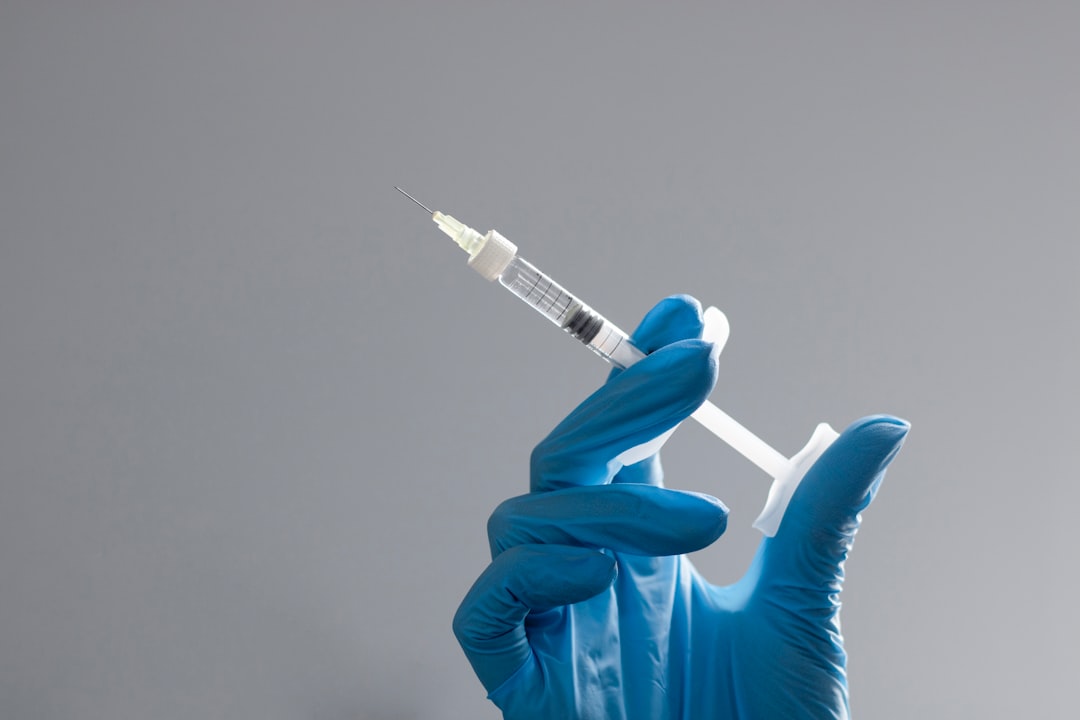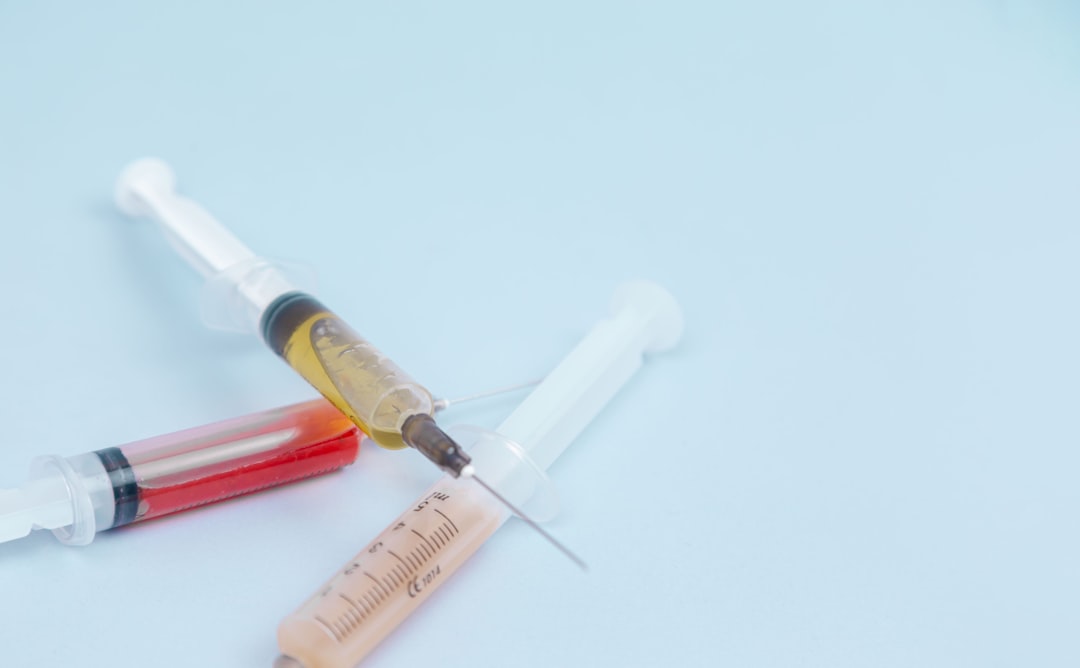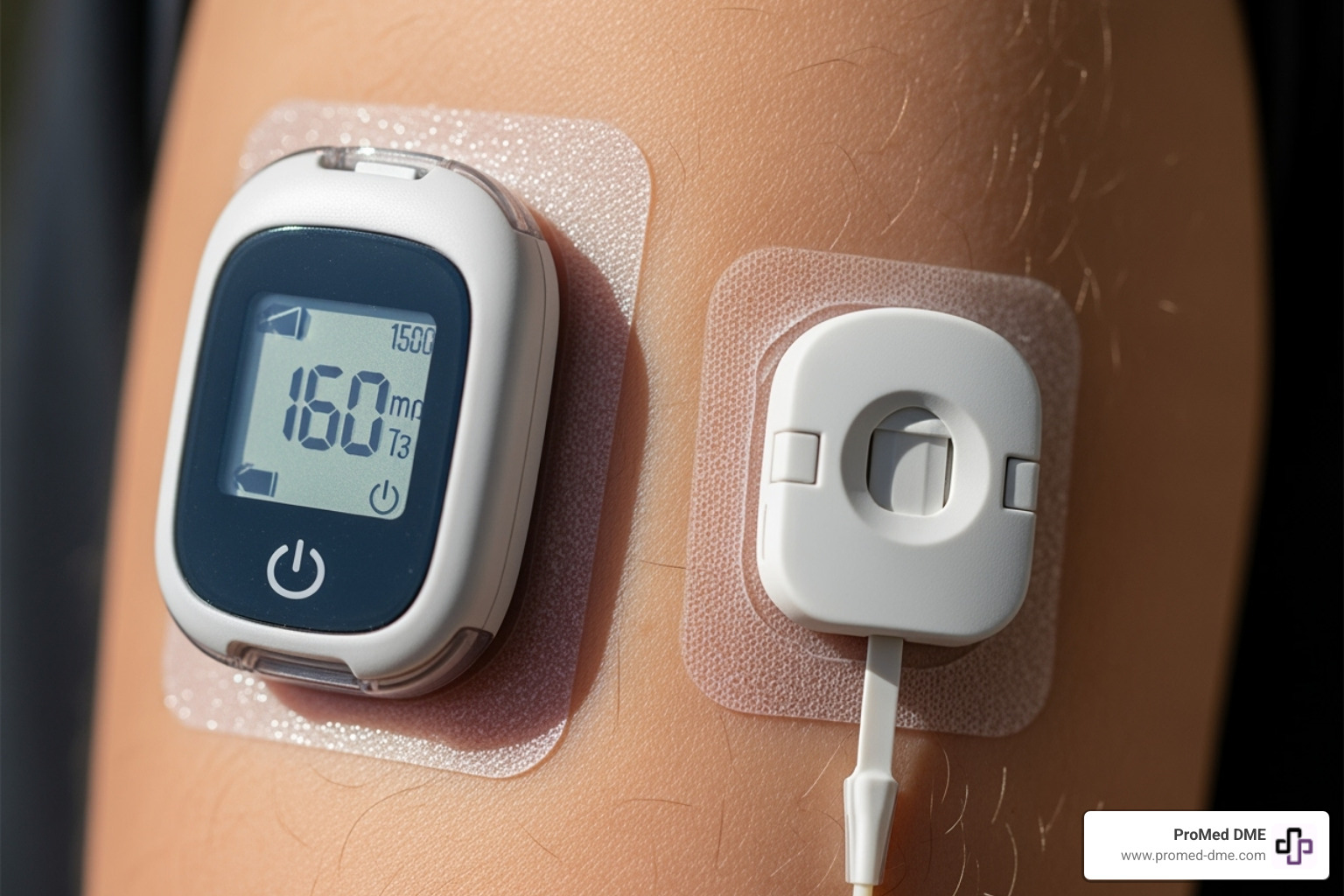Continuous Glucose Monitoring for Type 2 Diabetes: What You Need to Know

Understanding Continuous Glucose Monitoring for Type 2 Diabetes
Type 2 diabetes (T2D) affects roughly 38 million Americans, and its management is a daily, often invisible, effort. If you live with T2D, you already know that keeping blood glucose in a healthy range can feel like a 24-hour job. It’s a constant mental calculation: each bite of food, each walk around the block, every stressful email, a poor night's sleep, and even a common cold can nudge your glucose in one direction or another. This relentless vigilance can be exhausting.
Traditionally, most people have relied on finger-stick meters to collect periodic “snapshots” of their glucose. While these meters are a vital tool, their single measurements can miss critical information—like the slow, steady rise after a meal or the dangerous dip that can happen while you sleep. They tell you where you are, but not where you've been or where you're going.
Enter Continuous Glucose Monitoring (CGM), a transformative technology that delivers real-time readings every few minutes. Instead of isolated snapshots, a CGM paints a complete portrait of your unique glucose patterns, revealing the trends and trajectories that were previously hidden. With the right education and support, a CGM can empower you to tune medications, time your meals with precision, plan effective workouts, and avoid many of the stressful surprises that come with T2D.
ProMed DME has been helping people nationwide access this life-changing diabetes technology—backed by a dedicated nurse, expert customer service, and free, fast shipping—from our headquarters in Stuart, Florida. This article explains exactly how CGM works, what the science says about its benefits for T2D, and what to consider before getting started.
Snapshot vs. Movie: Why More Data Matters
Below is a simple illustration of the difference between finger-stick testing and the continuous data stream from a CGM.
Imagine you're tracking a car on a highway. A finger-stick reading is like a single photograph of that car. You know its exact location at that one moment in time, but you have no context. Is it accelerating? Is it braking? Is it about to take an exit? You can't tell from a single picture.
A CGM, in contrast, is like a live video feed of the car's entire journey. You can see the full 24-hour line graph of its movement, complete with arrows indicating whether it's speeding up (glucose rising) or slowing down (glucose falling). This continuous movie gives you the context and foresight to make proactive decisions, rather than reactive ones based on limited information. You see the whole story, not just a single frame.
By the end of this guide you will understand:
- The basic components of a CGM system
- How CGM differs from traditional Self-Monitoring of Blood Glucose (SMBG)
- Evidence-based benefits of CGM for people who use insulin, as well as those managed with pills or lifestyle alone
- Common challenges (cost, data overload) and how to tackle them
- How to work with your insurance and the ProMed DME support team to start your own CGM journey
What is Continuous Glucose Monitoring (CGM) and How Does It Work?
Imagine having a personal glucose detective working around the clock, giving you insights into your blood sugar levels without constant pokes. That is essentially what a Continuous Glucose Monitor (CGM) does!
A CGM system typically consists of three main parts:
- A tiny sensor – This is the core of the system. A small, wearable device contains a hair-thin, flexible filament that you insert just under your skin, typically on the back of your upper arm or abdomen. The insertion process is quick and virtually painless for most users, thanks to a simple, disposable applicator. This sensor doesn't measure glucose in your blood directly; instead, it measures it in the interstitial fluid—the fluid that surrounds your body's cells. This is a highly reliable proxy for blood glucose.
- A transmitter – This small, durable component clips onto the sensor. Its job is to take the glucose information from the sensor and wirelessly send it via Bluetooth to your display device, usually every one to five minutes.
- A receiver or smart device – This is where you see your data. It can be a dedicated handheld reader provided by the manufacturer, or more commonly, an app on your smartphone or smartwatch. The display shows your current glucose number, a graph of your recent history, and crucial trend arrows that predict where your glucose is heading in the short term (e.g., rising quickly, falling slowly).
Because readings are continuous, you see not only the current number but also trend arrows (rising, falling, steady) and customizable alerts for high or low glucose. Many people say these predictive alarms feel like an early-warning system, letting them treat lows before they become dangerous or adjust food/insulin to prevent stubborn highs. This moves diabetes management from a reactive state to a proactive one.
CGM vs. Traditional Finger Pricks (SMBG)
For decades, Self-Monitoring of Blood Glucose (SMBG) with finger sticks was the standard of care. SMBG is still important—especially to confirm a low or double-check an unexpected CGM result—but it has well-known limitations. Think of SMBG as a Polaroid snapshot and CGM as a full-length video. The snapshot is useful, but the video tells the whole story.
One of the most significant advantages of CGM is the ability to track a metric called Time in Range (TIR). TIR is the percentage of time a person spends with their glucose levels in a target range, typically 70-180 mg/dL. While A1C gives you a three-month average, TIR tells you about daily glucose variability and control. It's impossible to calculate TIR with only a few finger sticks a day, but a CGM makes it a primary focus of therapy.
Here is a concise comparison of the two approaches:
| Feature | SMBG (Finger-Stick Meter) | CGM |
|---|---|---|
| Data points per day | 3–8 (varies by user) | Up to 288 (every 5 min) |
| Shows rise/fall trends | No | Yes (trend arrows & graphs) |
| Overnight coverage | Rarely, unless you wake to test | 24/7, including sleep |
| Hypo/hyper alerts | No automatic alerts | Yes, customizable sound/vibration |
| Pain/skin impact | Finger soreness, calluses | Painless after insertion; change sensor weekly/bi-weekly depending on brand |
| Data sharing | Manual logbook or app entry | Automatic cloud upload for telehealth, caregiver alerts |
| Ideal use case | Spot-checking, calibration back-up | Comprehensive management, pattern finding |
A 2021 systematic review found that adults with Type 2 Diabetes using a CGM lowered A1C by an average of 0.31 percentage points and spent 8.6 percent more time in range compared with SMBG alone .
A Day in the Life With CGM
Below is a real-world example of what continuous feedback can look like. Imagine you enjoy a bowl of oatmeal at 8 a.m. and see your glucose gently rise from 105 mg/dL to 140 mg/dL by 9 a.m.—still well within your personal goal. At noon you walk for 20 minutes and notice an arrow pointing diagonally downward, indicating your glucose is falling but not dangerously so. A finger-stick meter would have missed both of those valuable data points.
Later that evening, you have dinner with friends. You might see a sharper spike than you expected. The CGM data allows you to see exactly how that specific meal affected you, empowering you to make a different choice next time or plan a post-meal walk. Overnight, the CGM continues to stand guard. It might alert you to a dip into hypoglycemia, allowing you to treat it before it becomes severe. Or it might reveal a 'dawn phenomenon'—a natural rise in glucose in the early morning hours—that you and your doctor can then decide how to manage. These are insights that are nearly impossible to capture with finger sticks alone.
With the help of your diabetes care team (and the free nurse support available through ProMed DME), you can learn to interpret these patterns, adjust medication timing, or tailor your next meal for optimal control.
Common Questions About CGM Hardware
- Is it painful to insert? Most sensors come with an auto-applicator. Users describe the feeling as a quick pinch or nothing at all. The flexible filament sits comfortably under the skin, and most people forget it's there.
- Will it stay on while I exercise or swim? Yes—most sensors are water-resistant for showers, pool time, or sweaty workouts. For extra peace of mind during vigorous activity or extended water exposure, adhesive patches or overlay tape can provide extra security.
- How often do I have to replace it? Depending on the brand (like Dexcom, FreeStyle Libre, or Medtronic), sensors last from 7 to 14 days. Transmitters are more durable and typically last from 3 to 12 months before needing replacement.
- Do I still need to do finger pricks? This depends on the system. Some CGMs require occasional finger-stick calibrations to ensure accuracy, while others are factory-calibrated. However, it is always recommended to use a finger-stick meter to confirm a CGM reading before making a treatment decision (like taking insulin) if your symptoms don't match what the CGM is reporting, or to verify an urgent low glucose alert.
- How accurate are CGMs? Modern CGMs are highly accurate. They measure glucose in the interstitial fluid, which can lag behind blood glucose levels by about 5-15 minutes. This is especially noticeable during times of rapid change, like after a meal or during exercise. Your care team can help you understand this lag time.
- Can I share my data? Absolutely. Most CGM systems connect to smartphone apps that allow you to securely share your real-time and historical data with family members, caregivers, and your healthcare team. This is a huge benefit for telehealth appointments and for parents or partners who want to help monitor a loved one's glucose levels.
If you are considering a CGM, ProMed DME can verify your insurance benefits, coordinate paperwork with your prescriber, and ship supplies directly to your door—often at little or no cost beyond your regular co-pay.
In the next sections of this guide you will find the proven clinical benefits of CGM in Type 2 Diabetes, potential challenges (and practical solutions), plus step-by-step tips for getting started.
Related Resources & Articles
Stay informed with our informative blog posts.
Discover the ProMed Advantage
& Try Our Products
We offer free shipping and legendary customer service to ensure you receive the
best DME products for your needs.



